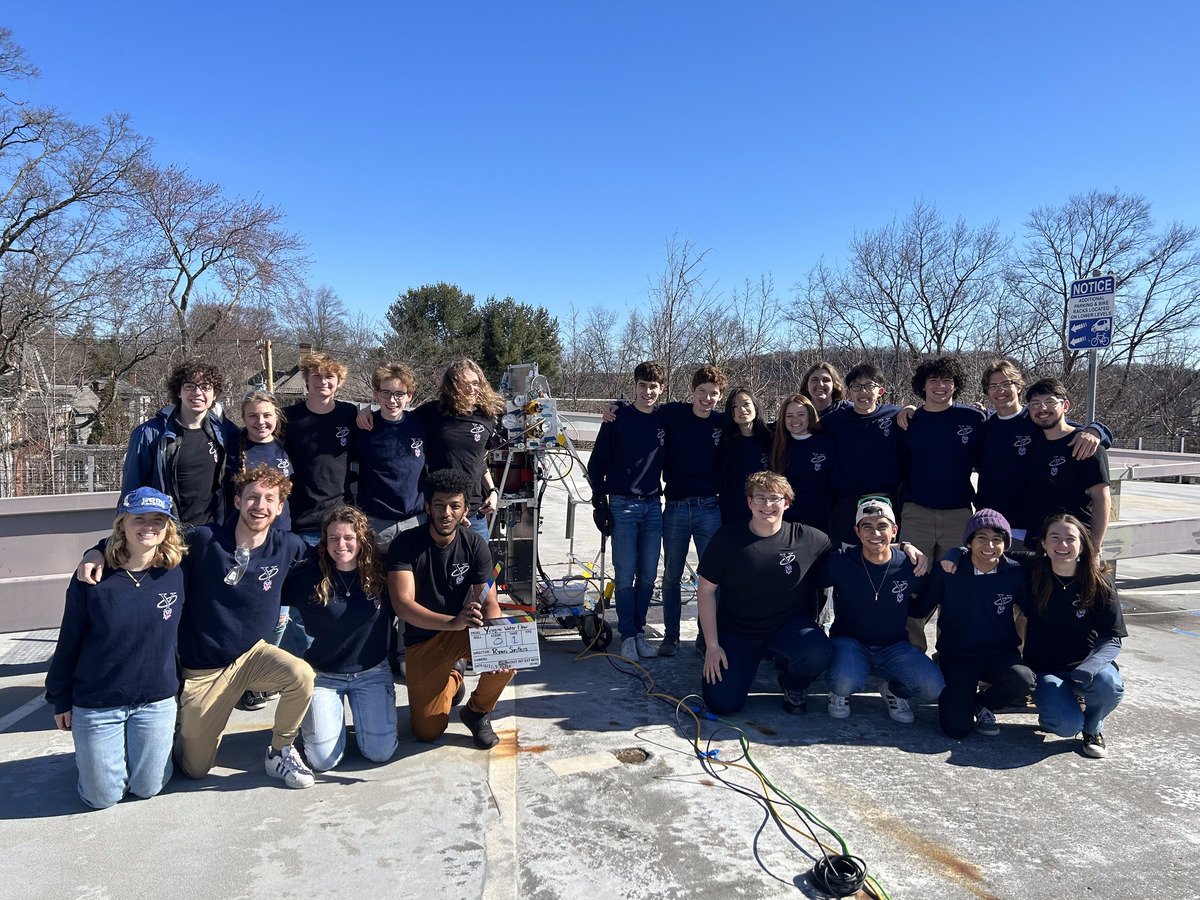YUAA’s Project Liquid tests liquid rocket engine
The Project Liquid Team at the Yale Undergraduate Aerospace Association tested their liquid rocket engine for the first time on April 2.

Maria Korolik, Contributing Photographer
The Project Liquid Team at the Yale Undergraduate Aerospace Association conducted the first test of their liquid rocket engine on April 2.
Whereas before, only select systems of the engine were examined individually, last Sunday’s test marked the team’s first time testing the engine as a whole. The team — led by Jonah Halperin ’26 and Henry Demarest ’25 — is currently in the process of refining some of the subsystems of the engine and hopes to conduct another test before the end of the year.
“A lot of people in YUAA and a lot of Yale engineers in general are interested in space exploration, and the aerospace industry,” Demarest said. “And most modern rockets use liquid propulsion. So we wanted to bring that technology and get more familiar with the technology while we’re in undergrad.”
The project was started by Ryan Smithers ’25 in Fall 2021. Since then, the team has grown to over 30 members. The team currently works on the engine within one of the storage spaces of the Mann Engineering Student Center in Dunham Laboratory.
The engineers hope to create a rocket engine able to theoretically output 200 pounds of force if loaded with rocket fuel. According to Demarest, this number, while not comparable to the rocket engines corporations or governments can produce, is significant because the engine could theoretically lift most people. The team currently has no plans of testing the rocket with combustible fuel, but hopes to prove the engine’s capability with water tests.
Halperin notes that through the building process, the team is focused on the application of mechanical engineering. He said that the mechanical engineering program at Yale is very theory focused.
“[Theory is] great, obviously, to know how to design things,” Halperin said. “But when you start going on to Master’s degrees, and you’re saying what’s an NPT versus SAE fitting? What is the correct sizing? And just starting to understand how you take those theoretical ideas and put them in a practical application. So the idea for this club is that we’re able to do something really cool, build a rocket engine, and learn stuff that is going to be even cooler.”
Project Liquid consists of four smaller subteams: test stand, electronics and control, feed system and thrust chamber.
The test stand subteam builds the metal frame structure that physically contains the components of the rocket engine. The electronics and control team connects all of the wiring for the engine, as well as the electronic sensors, and writes the programs for the engine. The feed system subteam deals with the plumbing of the engine — routing the engine fuel and the highly pressurized gas used to pressurize the engine. The thrust chamber team designs the injector and the portions of the engine that would need to handle extreme heat if tested with real rocket fuel.
“Progress has really picked up this semester and it’s really motivating, especially for the incoming class of 2027,” Kidus Abebe ’26, the thrust chamber subteam lead, said. “When we present our project during Bulldog Days and again during the extracurricular bazaar, I think it’s going to be really motivating.”
Great enthusiasm was shared amongst many of the engineers in the project. Abebe, Halperin, Demarest, Jack Griffin ’26, Cayden Cerveny ’26 and Aaron Cope ’26 all shared their passion for the project and the group’s camaraderie.
According to Halperin, the project would not have been possible without the support received from Yale. Many members of the faculty have individually supported the project in areas such as part acquisition, procuring space to work and securing equipment. Yale Environmental Health and Safety has also helped to manage project safety.
“We’re a group that’s doing something awesome; we’re building a rocket engine,” Halperin said. “There is no person who can’t walk out of that room right now and say, ‘I didn’t contribute something,’ because everyone has been able to help … Continuing to build and giving undergraduates a chance to really understand what industry is like, understand what engineering can be, and even just what good teamwork is, [that’s] something that we’re looking forward to.”
Dunham Laboratory and the Mann Center are located on Hillhouse Avenue.
Correction 4/14: A previous version of this article mistranscribed a quote from Halperin.







